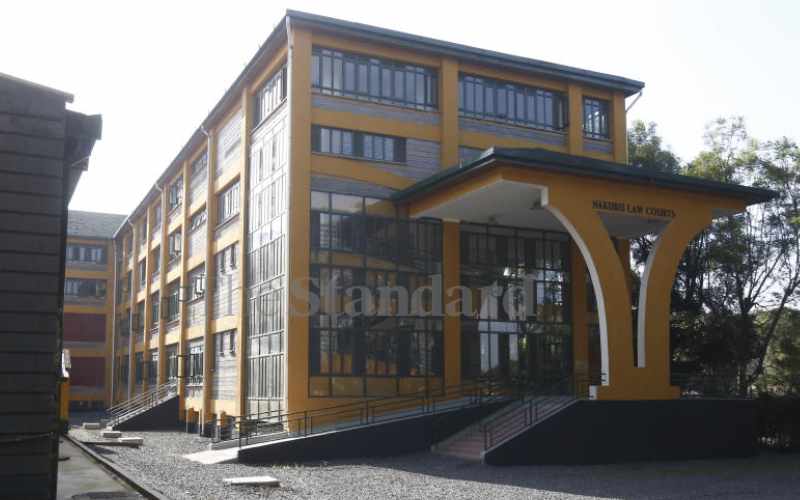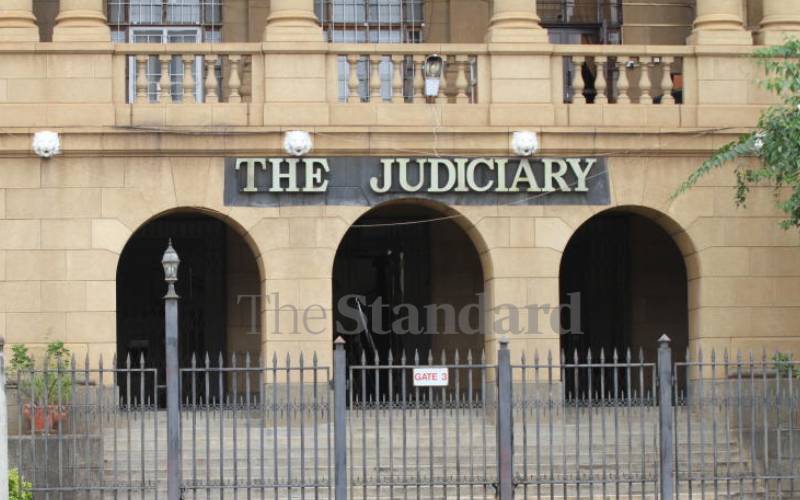Appellate judges on Friday delivered their judgement in a case challenging the May 13, 2021, High Court decision on the Building Bridges Initiative (BBI) to amend the Constitution.
It is unprecedented for the Court of Appeal to dispense with such a complex case within 60 days of its filing. Last year, eight people approached the High Court seeking stop a referendum to amend the Constitution. A five-judge bench subsequently consolidated their case into 17 questions and ruled in favour of the petitioners, triggering the appeal.
Kenya’s appellate court, historically renowned for moving at the speed of molasses and long designated as the cemetery of justice in an earlier authoritarian era, could take as long as seven years to consider a preliminary application – let alone hear the main appeal.
The BBI appeal was not only fast-tracked but leapt ahead of some 7,598 cases filed in the Court of Appeal before it. After four days of oral presentations in court on the BBI appeal from June 29 to July 2, during which the judges were not furiously scribbling, the seven-judge bench set down August 20 as day for delivering its verdict.
The quick turnaround in the BBI case is a testament to what focused 360-degree investment in the justice sector can achieve.
The Court of Appeal in Nairobi is one of 26 stations across the country that transcribe proceedings, freeing judges from manual note-taking to hear and observe what litigants and their lawyers say in court. It has emerged as the most enthusiastic justice forum in adopting the use of internet-based video conferencing for its remote hearings.
In April last year, at the onset of restrictions to contain the spread of the Covid-19 pandemic, the Court of Appeal delivered 18 judgements in criminal appeals and another 40 decisions on applications and civil appeals. It has actively deployed technology to hear appeals and applications.
Before the Court of Appeal temporarily closed out-stations in Nyeri, Kisumu and Malindi last year on account of the shrinking bench occasioned by the failure to appoint replacements for retiring judges, it had reduced the number of cases filed five years earlier by half – from 648 in January 2017 to just 300 by the end of June 2020. The court’s case backlog grew from 3,631 cases in 2019 to 4,982 last year, while its case clearance rate declined to 41 per cent in 2020 from 51 per cent the previous year.
Efficiency and effectiveness in the Judiciary has a concrete character, thanks to the adoption of a data culture, which started with the 2015 Judiciary Case Audit and Institutional Capacity Survey – the first comprehensive assessment of the Judiciary’s workload.
The study is part of the software investment from the Sh12 billion World Bank-financed Judicial Performance Improvement Project (JPIP), mostly known for the construction of courts around the country, which enabled the institution to map the number of cases filed, their ages and progress in resolving them.

JPIP is a World Bank management project launched in December 2012 to improve performance in the Judiciary by building courts, strengthening administrative processes and supporting training. By coordinating, monitoring, evaluating and procuring services in target areas, the project sought to place people at the centre of efforts to deliver justice.
The audit enabled the Judiciary to institute performance measurement and management, now in its fifth annual cycle; develop timelines for disposition of the various cases; set criteria for determining what would constitute ‘delay’ and hence ‘backlog’; and develop processes of addressing it. Each judicial officer fills information into a daily court return template on the cases she or he deals with. The daily return template has now been enhanced into a case tracking system that not only lets staff report on their work, but also tracks cases from the moment they are filed.
Court performance is now measured against indicators such as case clearance, backlog reduction, timely delivery of judgements. Non-judicial indicators include budget compliance, timeliness in refund of bail and bond funds, and timeliness in the turn-around time on complaints to the Ombudsman.
Strengthen a performance culture: Data analysis capacity, dashboards for different audiences, feedback to courts, publication and other engagement with the public.
The numbers provide an accurate and consistent basis for management decisions on policy and resource allocation — such as the purchase of some 1,300 computers and software for the 128 court stations across the country. By the time the Judiciary was being called upon to respond to Covid-19 restrictions, it was a case of preparation meeting opportunity through e-filing of proceedings, e-payment and virtual hearings.
On the strength of the data, the Judiciary introduced court-annexed mediation in April 2016 to explore and promote alternative dispute resolution. Mediation was first tried out at the Commercial and Family divisions of the High Court in Nairobi to offer fast and efficient dispute resolution. Litigants can request a court to refer their case to mediation, particularly when their disputes have remained unresolved for years.
Cases are screened, and the court provides three mediators from whom the parties select the one they are most comfortable with. Court-accredited mediators, usually lawyers trained in mediation, listen to the parties’ grievances and support them in reaching a mutually acceptable solution. The information shared during mediation sessions is confidential and cannot be used as evidence in court. If an agreement is reached, it is legally binding, and not subject to appeal. If no settlement is reached, the case goes back to court.
Since the rollout of court-annexed mediation and in 2017, over 9,000 cases have been referred to mediation, representing a total value of Sh78 billion. More than half of the cases have already been settled. Last year, court-annexed mediation processed 1,111 cases, resolving 953 of then, partially settling 121, and recording consents in 37 others. An estimated Sh4.5 billion previously tied up in litigation was released into the economy.

Disputes must be settled within 60 days, unless the court grants an extension of time. The adoption of court-annexed mediation has improved Kenya’s World Bank Ease of Doing Business ranking to 56 out of 190 countries. The Judiciary aims to normalise mediation in all courts and roll out to the Environment and Land Courts.
Delivering change required delivering continuous judicial education for judges and magistrates, and training staff on supervisory and leadership skills. Previously, the Judiciary was hobbled by obsolete systems and processes, and in some instances, their total absence — from the registries in the courts to the critical functions such as finance, human resources and procurement. The World Bank also required the Judiciary to have internal capacity accountable to the accounting officer to manage all its construction and maintenance projects.
For example, courts would be built or modified without capacity within the institution to ensure accountability for quality or standards.
A new directorate of building services was established to oversee court construction and maintenance services, while manuals and standard operating procedures were developed for many internal processes, including automation of registries and complaints management systems.
Since the Judiciary is only one of many actors in the justice delivery chain, its best intentions come short because of resource and capacity gaps among other critical actors such as prosecution, police, prisons and probation services.
The National Council on the Administration of Justice (NCAJ ) brings all these actors together to discuss challenges and how to resolve them. The NCAJ structure is replicated to the station level in the Court Users Committees (CUC) and are mandated to discuss the local issues plaguing justice delivery, including using the court data to address issues such as adjournments and other delays in the resolution of cases.
From the date of its first filing in the High Court on September 16 to the decision in the Court of Appeal, the BBI case will have been resolved in 11 months – if there is no further challenge to the decision.
Surveys showed the changes in the institution are not going unnoticed: a poll found that court users satisfaction had grown from 27 per cent to 64 per cent in 2019.
Credit: Source link